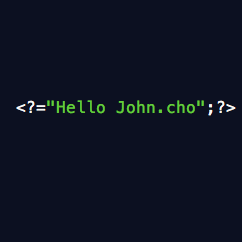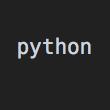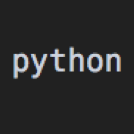리스트는 파이썬의 sequence 자료형 중 가장 많이 사용되는 대표적인 자료 구조다. 각각의 값들은 요소 또는 원소라 부르며 콤마(,)로 구분한다.
원소마다 index가 0부터 순차적으로 할당되며 index를 통해 원소에 접근할 수 있다. 리스트는 일반적으로 대괄호([ ])로 선언하며 list()로도 선언 할 수 있다.
다음은 다양하게 선언한 예제이다.
- list0 = []
- list1 = ['one', 'two', 3, 4, 5]
- list2 = [1, 2, 3, 4, 5]
- list3 = ['one', 'two', 'three', 'four', 'five']
- list4 = ['one', 'two', ['three', 'four']]
- list5 = list(range(100))
- print(type(list0)) #
 리스트는 list0 처럼 원소가 없거나 list1처럼 문자열과 숫자를 원소로 가질 수 있으며, 리스트안에 리스트를 가질 수 있다. 즉 Java나 C언어의 배열은 동일한 타입의 자료형만 원소로 가질 수 있지만 list는 여러가지 타입의 자료형을 원소로 가질 수 있다. 그러므로 배열과 리스트는 엄밀히 따지면 다르다.
리스트는 list0 처럼 원소가 없거나 list1처럼 문자열과 숫자를 원소로 가질 수 있으며, 리스트안에 리스트를 가질 수 있다. 즉 Java나 C언어의 배열은 동일한 타입의 자료형만 원소로 가질 수 있지만 list는 여러가지 타입의 자료형을 원소로 가질 수 있다. 그러므로 배열과 리스트는 엄밀히 따지면 다르다.
원소에 접근하려면 대괄호([])안에 index를 입력하면 된다. 또한 음수 index로의 접근이 가능하고 일정 범위만큼 잘라 출력 할 수 있다.
이를 슬라이스(slice)라 한다.
- print("list1[0] : ", list1[0]) # list1[0] : one
- print(list1[2]) # 3
- print(list1[1:5]) # ['two', 3, 4, 5]
- print(list1[-1]) # 5
새로운 변수에 기존 변수를 대입한 경우 두 변수는 리스트 하나에 사용된 메모리를 참조한다. 즉, 새로운 메모리로 리스트를 할당하는게 아는게 아닌 두개의 변수가 메모리 하나를 참조하는 것이다.
- list6 = list1
- print(hex(id(list1))) # 0x188e20c
- print(hex(id(list6))) # 0x188e20c
파이썬에선 리스트를 쉽게 생성하기 위해 list comprehension를 제공한다.
가령, 0부터 9까지 제곱된 수의 리스트를 생성한다고 하였을 경우 다음과 같은 방법이 있다.
- square = []
- for x in range(10):
- square.append(x**2)
- print(square) # [0, 1, 4, 9, 16, 25, 36, 49, 64, 81]
list comprehension를 사용하면 간결하게 위와 동일한 리스트를 생성 할 수 있다.
- squares = [x**2 for x in range(10)]
- print(squares) # [0, 1, 4, 9, 16, 25, 36, 49, 64, 81]
처리속도에서도 차이가 발생했다.
프로파일러로는 cProfile를 사용하였으며 0부터 9999999의 수를 가지는 리스트의 모든 원소들을 제곱하여 처리 속도를 비교하였다.
- def square(list):
- ~~~~
- list = list(range(10000000))
- square(list)
| 1.049 |  |
| 1.282 |  |
| 3.569 |  |
| 3.133 |  |
list comprehension로 리스트를 생성한 것이 append로 생성하는 것보다 처리 속도가 빠른걸 알 수 있다..
list comprehension에 대해 더 자세한 사항은 공식 문서를 참고하길 바란다.
내장함수
| 함수 | 설명 |
| len() | 리스트의 원소 수를 반환한다. syntax len(list) example
|
| max() | 리스트 원소 중 최대 값을 반환한다. python2,3 에서 max() 함수의 가장 큰 차이점은 python2에선 원소의 자료형이 달라도 사용 가능했지만 python3에서는 같은 자료형에 대해서만 사용 가능하고 자료형이 같지 않으면 typeError가 난다. syntax max(list) example
|
| min() | 리스트의 원소중 최소값을 반환한다. python2, 3 의 차이점은 max() 함수와 동일하다. syntax min(list) example
|
| list() | list()는 시퀀스 자료형을 인수로 받아 새로운 리스트로 변환하여 반환한다. list()는 튜플을 리스트로 변환하는데 사용된다. syntax list(aTuple) example
|
내장 메소드
| 메소드 | 설명 |
| append() | 전달한 객체가 리스트의 마지막 요소로 추가된다. syntax list.append(obj) example
|
| count() | 전달한 객체의 원소의 수를 확인한다. syntax list.count(obj) example
|
| extend() | 리스트 객체를 전달하여 한번에 여러개의 원소를 추가한다. syntax list.extend(seq) example
|
| index() | 원소의 위치를 확인한다. 기본적으로 가장 낮은 인덱스를 반환하며 두번째, 세번째 매개변수로 검색하는 범위를 지정 할 수 있다. syntax list.index(obj) example
|
| insert() | 지정한 인덱스에 원소를 추가한다. 지정한 인덱스가 리스트의 길이보다 큰 경우 마지막에 추가된다. syntax list.index(index, obj) example
|
| pop() | 지정한 인덱스의 원소가 반환되며 리스트에서 제거 된다. obj를 전달하지 않으면 기본적으로 마지막 원소를 반환하며, obj를 전달하면 지정한 인덱스의 원소가 제거 후 반환된다. syntax list.pop(obj=list[-1]) example
|
| remove() | 리스트의 원소를 제거 한다. pop()과의 차이점으로는 제거만 하고 해당 원소를 반환하지 않는다. syntax list.remove(obj) example
|
| reverse() | 리스트의 원소를 반전시킨다. syntax list.reverse() example
|
| sort() | 리스트의 원소를 재정렬 시킨다. python3 에서는 max() 함수와 마찬가지로 같은 자료형에서만 사용 가능하다. python3에 서의 서로 다른 자료형에 대한 정렬은 sorted 함수를 이용한 방법이 있다. syntax list.sort([func]) example
|







 python
python